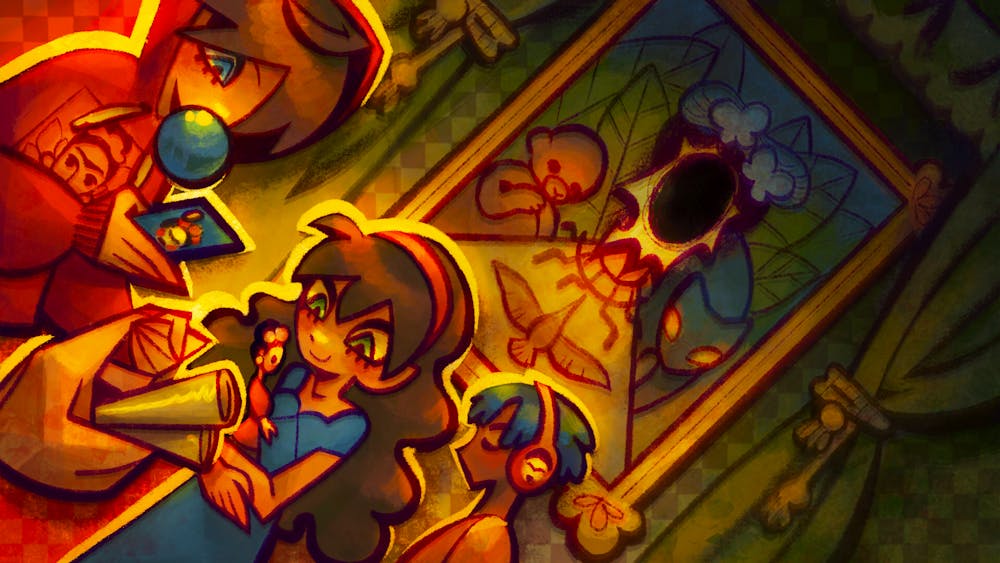When you hear “Frida Kahlo,” you picture her dark hair tied up with flowers, her skin a light brown, cheeks rosy, eyebrows full, eyes disinterested, and lips gently pursed, all adorned in a feminine Tehuana outfit. This is the image of Frida Kahlo that you see on tote bags, T–shirts, mugs, and magnets that the culture industry sells. From Frida Kahlo immersive experiences to “feminist” Frida Kahlo apparel, you can experience Kahlo’s likeness everywhere for a price. But this isn’t the Frida Kahlo that the artist revealed to us on canvas.
Kahlo is the canon of commercialized feminism. Capitalist manufacturers serve up the likeness of Kahlo on their commodities for profit. They minimize her identity as solely “feminist,” delegitimizing her art, her culture, and her complicated values. It’s deafening that she has been made into a mere symbol of feminism. By branding Kahlo as simply “feminist,” the culture industry acts just the opposite, limiting yet another woman from the recognition she deserves.
To be clear, Kahlo was indubitably a feminist. Surrealist artist Kahlo grew up during the Mexican Revolution of the early 20th century. After contracting polio at six, she took up painting to fill her time while immobilized. Her work drew on her experiences of marriage, her miscarriages, and her innumerable medical operations. These vulnerable portrayals of her pain—which were her own female experience—greatly connected with female audiences and made her work implicitly feminist.
Kahlo was also explicitly feminist as she visually challenged gender norms in her portraits. Of her 143 paintings, 55 are self portraits. Kahlo, born to a Spanish and Indigenous mother and German father, represented herself with brown skin, facial hair, and her infamous unibrow. She was openly bisexual and consistently challenged standards of femininity through her androgynous dress and self portraits. However, the Frida Kahlo the culture industry prints on phone cases and coasters is often white–washed and “beautified” to fit the bill of the typical hyper–feminine, poised, and idyllic feminist. When the culture industry lightens Kahlo's skin and erases her facial hair, they erase everything she stood for as an artist, everything that made her work explicitly feminist. The Frida Kahlo we buy into isn’t the real Frida Kahlo at all.
Kahlo didn’t care about selling herself as a feminist. She was portraying her complicated female identity—not commercializing it. The magic of Kahlo’s work is that she is a pure surrealist; she lived a surrealist life and recorded it through her art. So by putting her whitewashed image on graphic tees, the culture industry pigeonholes her into being one–sided. Her likeness has become more known than her art.
Our culture champions Kahlo as a feminist, but in today’s world, they would eat a woman alive in the media if she lived the life she led. Kahlo’s art is largely centered around her messy relationship with fellow artist Diego Rivera. Rivera was 21 years her senior and left his second marriage to marry Kahlo. They had a toxic marriage, filled with affairs on both sides, including one between Kahlo and Communist exile Leon Trotsky. Rivera had an affair with Kahlo’s sister, and the pair eventually divorced. Swept up in the blinding bite of toxic love, the couple remarried in 1940 despite no effort from either party to reform. Kahlo glorified this tumultuous and abusive love in her art and embraced it as part of her identity. If a contemporary artist, especially a female artist, showed that she was recommitting to abusive exes and stepping out on her husband, she would be marked a “traitor to the sisterhood” and a “disgrace to womankind.”
If people knew Kahlo for her astounding complexities, they would understand what Kahlo conveyed through her art: not a feminist halcyon message, but the nuances and brutality of human life. Kahlo certainly was a feminist, but she was so much more than that. She was complex, human, emotional, androgynous, violent, passionate, and intelligent. She isn’t just the woman you see on your morning cup of tea.
The culture industry has sold her out, branded her, and placed a glass ceiling atop her head to make a quick buck—because being a pretty feminist is a lot more profitable and a lot more controllable than being a real, unyielding, goddamn woman.







